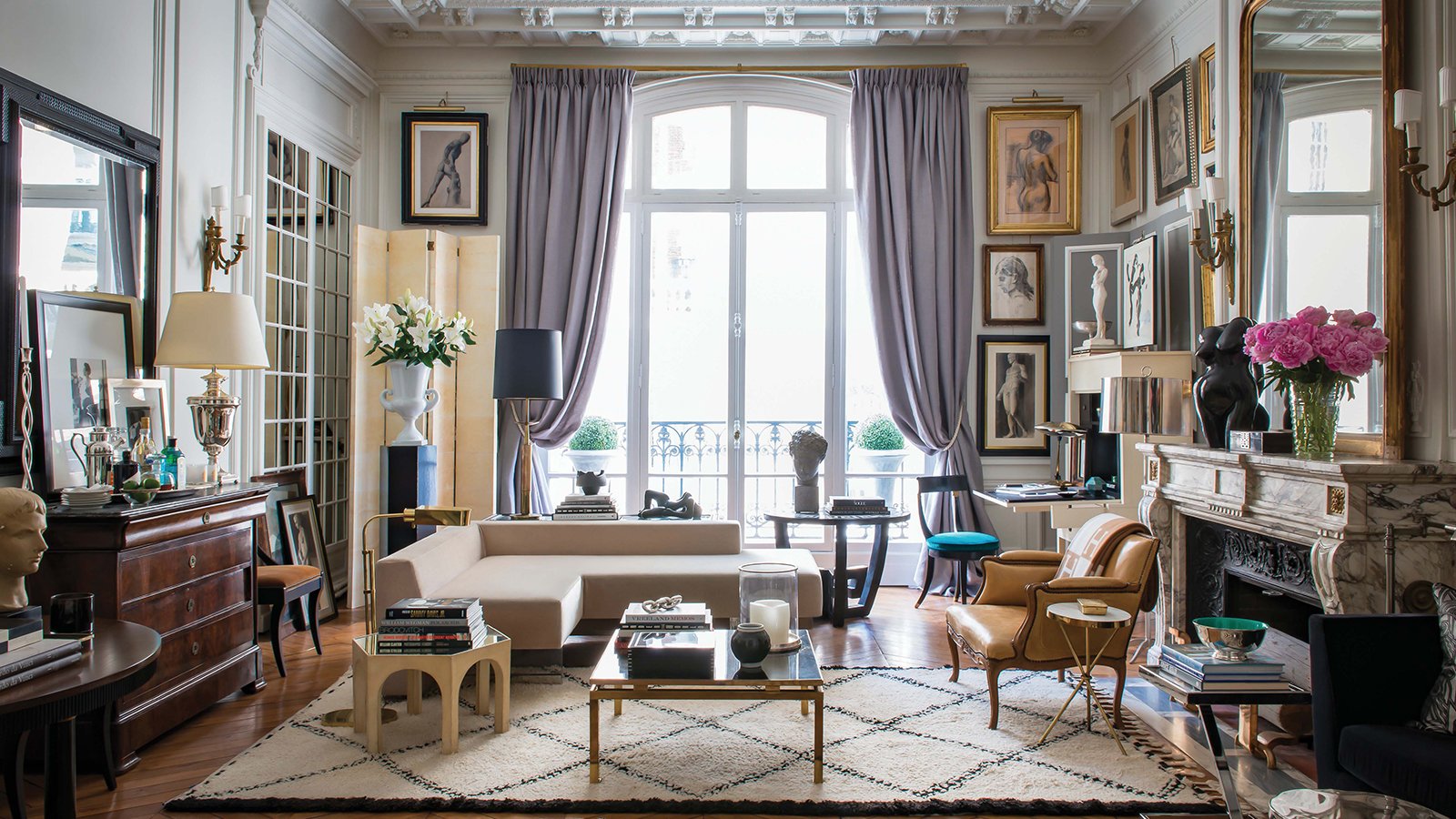Parisian By Design | How to Decorate in Classic French Style

It's no secret that our team here at Artfully Walls is very inspired by French design, so we absolutely couldn't wait to get our hands on a copy of the newly published monograph Parisian by Design: Interiors by David Jimenez, written by Diane Dorrans Saeks. Whether you live in the City of Light or thousands of miles away, Jimenez imparts ideas and inspiration for decorating and living like a Parisian, offering insider tips on everything from sourcing classic French paint colors to navigating a flea market like a pro. Read on for some of Jimenez’s top tips for unearthing treasures of your own.
“Walking through the Porte de Vanves flea market on a sunny summer day can be wonderful fun. Surprises abound: Hidden behind an old copper pot one might find a Picasso linoleum print, or inside a dusty artist’s portfolio a tattered Matisse sketch waits to be discovered.”
The following is an excerpt from Parisian by Design: Interiors by David Jimenez by Diane Dorrans Saeks.
©Parisian by Design: Interiors by David Jimenez by Diane Dorrans Saeks, Rizzoli New York, 2022. Photography ©Xavier Béjot.
Marché Paul Bert Serpette is the most stylish of the markets, and it is where many international and Instagram trends begin. For example, some years ago the dealers here were the first to start showing whitewashed Swedish country antiques and Gustavian chairs, a trend which then began popping up everywhere. Some other looks and styles popularized by Serpette include: Belgian or Antwerp natural-linen monochromaticism; hand-painted chinoiserie or lacquer screens and panels: white plaster urns and busts; slate tables; sixties Pop Art pieces; Murano-glass chandeliers; monogrammed antique silver; Moroccan treasures; and more recently, Bonacino rattan seating. Style begins at Serpette.
MARCHÉ PAUL BERT SERPETTE: GETTING STARTED
This is a weekend market. Arrive at 8 a.m. or earlier, but start with a coffee and croissant at Le Bistrot Paul Bert.
Make a list of your dream finds. It might be anything from a small gold-framed eighteenth-century portrait or a Beaux-Arts figure study in charcoal to a small alabaster vase or antique monogrammed linens to a watercolor landscape. Or it could be something less exact, like old books or a piece that might be quintessentially French, like antique silver. These French style essentials make regular appearances at all price points.
After coffee, start your search at the dazzling Lila K stand, just opposite the café. Take a slow, appraising walk through the stand. Introduce yourself to Lila if she is there. Check what’s new. Let her know what you’re looking for. Ask for recommendations of other dealers for what you’re looking for.
The market is divided into indoor and outdoor sections. Continue indoors by walking into Marché Serpette, whose entrance is adjacent to Lila K. The level of design here is very high, and dealers are specialists and world experts in their fields. They curate and present furniture and accessories with care. Wander slowly, paying attention.
After viewing the items at all the indoor dealers in Serpette, walk to the outdoor Paul Bert stands. Jimenez has twenty or thirty reliable dealers here on his mental Rolodex. He appreciates their wisdom and their eye, networking with them and relying on their insight, resources, and recommendations.
Next, walk along the shaded outdoor allée, paying close attention to beautiful tableaux and collections, dramatic styling, and specialist collections.
GENERAL FLEA MARKET TIPS:
Flea markets, with all their exciting wares, can be daunting. Jimenez photographs images for reference, asking each dealer for permission first. Courtesy is essential.
Jimenez recommends looking for pieces like furniture or accessories in their original condition and not restored. Ideally, an antique is “in its juice,” as the dealers say, which means that it is authentic and unrestored. It is not painted, cleaned, or added to in any way. Always look for authenticity.
Best tip: If you see something you love, a piece with soul that gives you an electric shock, that calls to you, negotiate with the dealer to buy it. If you walk away, it will probably already be sold when you return. Remorse and regret will follow. Love it? Appraise it. Take a close look. Measure it to be sure it is the right size for your needs. Turn over a chair or box to check the condition. Sit on the chair. If it is solid and sturdy, buy it. Arrange shipping or wrapping. Congratulations!
When Jimenez is shopping for himself, he seeks out rarity and craftsmanship. He is open to pieces that show signs of age, patina, cracks or scratches, or any other condition issues. “I might have a moderate repair done by a specialist, such as regilding or rewiring a lamp, reupholstering,” he says.
Jimenez recommends looking for pieces with soul. He always respectfully asks the dealer what the best price is. “It’s the start of a relationship, a discussion. They sell to designers and clients around the world. They know values. They know a fair price,” he says.
In the spirit of politesse, it’s ideal to know some gracious French phrases to voice at flea markets. Not all dealers speak English, so when you find a stand you like, address the dealer in French. Charm and admiration is a good opening salvo. Say something simple like J’aime beaucoup votre stand. (I like your stand very much.) Then gesture to something you like and ask Votre meilleur prix? (Your best price?) And, of course, always end with Merci.
Cash is king at the markets. It’s fast, and you will have better negotiating power; dealers will also appreciate it.
At the end of the day, you will have hopefully found a treasure. But more important than the acquisition is the experience you will remember and tell friends about. A memorable afternoon spent at a Paris flea market comes not only with a great find but with a great story as well.











